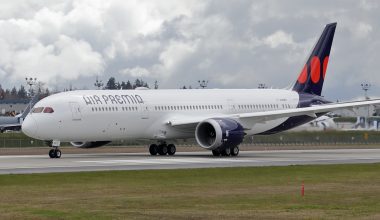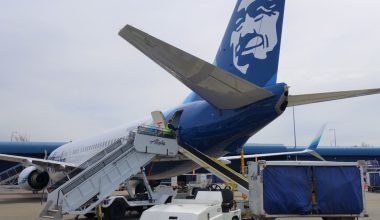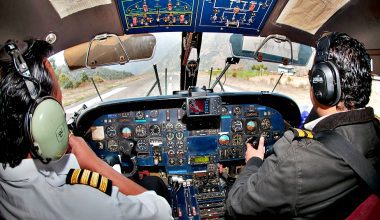A-10 Warthog, originally Fairchild Republic A-10 Thunderbolt II, is an extraordinary flying machine no one wants to mess with. The single-seat, straight wing jet aircraft was designed and developed to serve United States Air Force (USAF) for close air support (CAS) of friendly ground troops. It’s the aircraft that many military pilots dream of piloting and consider it luck to watch this legendary aircraft in action as one can feel the concussion deep in their chest when Warthog fires its 30mm rounds. The plane was developed in the middle of the Cold War and is one of the most iconic airplanes that mounts a seven-barrel Gatling Gun GAU-8 Avenger in 30mm caliber.
The C-RAM/ Phalanx CIWS (Counter-Rocket Artillery Mortar) system and CIWS (Close-in Weapon System installed on this striking aircraft use Gatling cannon to attack ground targets.

A-10 Warthog entered USAF service in 1976 to be catered solely for CAS against hostile targets. It commenced its maiden flight on 10 May 1972 and was introduced in October 1977 as of close air support attack aircraft. More than 700 such awe-inspiring aircraft have been built so far to provide quick action support against enemy armored vehicles and tanks. On the other hand, A-10 Warthog also seeks to make provision of guidance to CAS aircraft by a Forward Air Controller by providing direction to other airplanes in attacks on ground targets. OA-10 is the designated name for airplanes involved in this secondary role.
Also Read: Top 10 Most Popular Ultralight Aircraft
The venerable attack airplane A-10 Warthog is also called ‘the best close air support platform’ due to its excellent innovative and technological engineering and superior design.
Specifications
A-10 Thunderbolt (Warthog) is a mission aircraft manufactured by the Fairchild Republic, USA. It is reputed for its high survivability and versatility, well suited to operate from forwarding air bases, with STOL capability. The ‘flying gun’ stands 16.16 m long, has a wingspan of 17.42 m, and can fly at the speed of 700km/hour. The aircraft has high endurance and maneuverability at low speed and low altitude (below 1000 ft) that permits precise ground attack against armored vehicles and installations over all types of terrains.
Capabilities of A-10 Thunderbolt II Warthog
The simple, effective, and survivable twin-engine A-10 Warthog enjoys several combat capabilities that make it popular with military pilots and aviation enthusiasts.
Designed around 30mm GAU-8 Avenger rotary cannon, the Air Force aircraft can be used well against the light maritime attack and short-range threats and can deliver powerful rounds at the rate of fire against highly maneuverable missiles and fast maneuvering surface vessels. The A-10 Thunderbolt II can loiter near battlegrounds, perform accurate targeting and weapon delivery, and take off and land from relatively short runways. This giant aircraft’s airframe or mechanical structure is durable, and its simple design allows aircraft maintenance such as refueling, rearming, and servicing with the slightest amenities. A-10 Warthog has an exceptional survivability degree to 22mm by double redundant hydraulic flight systems. It’s no wonder that this state of art aircraft survives to fly despite heavy damage, i.e., losing one engine, half of the tail, one elevator, and half of a wing.

A-10 Warthog flies low to the ground, making it a better platform for the ground-attack role to target small, slow-moving targets and causing pain to ground targets. The slow-moving, low flying powerful A-10 Warthog is resilient enough to spot targets, absorb as much in the way of enemy gunfire.
Brief background of A-10 Thunderbolt II
A-10 was initially given the nickname of ‘Warthog’ for its aggressive and lumbering look; now, the name carries affection and respect. The development of the A-10 Warthog can be traced back to Vietnam War, where America found itself deficient in modern specialized attack aircraft with a relatively large payload and long loiter time and picking out ground targets with precision. After years of research and hard work regarding primary structure sections, engineering, and technical aspects, the first A-10 was accepted by Air Force Tactical Air Command on 30 March 1976 to fill a capability gap in America’s airpower arsenal. The Fairchild Republic got the spotlight with a design for an unusual airplane with practically unparalleled toughness, more munitions leverage, and 10000 pounds fuel capacity near the wing roots.
A-10 Warthog Cockpit
The aircraft of its own kind Fairchild Republic A-10 Warthog, initially kicked off with fuel and electronic panels on the cockpit, gradually adding more panels and finally to dedicated left and right side units. A-10 Warthog has an impressive simulator cockpit built with anti-ground and survivability in mind. The single-seat cockpit is equipped with a head-up display, a large bulletproof bubble canopy, a Have-Quick secure radio communications system, a TACAN system and is secured by an all-around titanium armor that also helps to protect flight-control system parts. The Night Vision Imaging System (NVIS) allows pilots to carry on with their missions during darkness on A-10C aircraft.
Unbelievable Engineering of A-10 Warthog
A-10 Thunderbolt II aircraft has unbelievable chemistry in its engineering and capability. A-10 Warthog is a big old bird without big power and not particularly well-suited for fighting fighter planes. It has suffered a bird strike from behind, and it doesn’t have a throttle as well as Machmeter.
- Engine
A-10 Warthog is powered by General Electric TF-34-GE-100 turbofan engines that produce 9000 pounds of thrust each while decreasing ingestion risks. Both heavy engines lie close to the aircraft’s centerline, protecting them from being destroyed by sudden foreign objects and directing their exhaust over the tailplane.
- Weapon
Armed with a 30x173mm GAU-8/A Avenger autocannon weapon, A-10 can carry up to ten Maverick air-to-surface missiles and can deploy a wide range of ordnance, for, e.g., LDGP mk82 226 kg, and can be fitted with Pave Penny laser guidance. The 11 store pylons of A-10 offer to carry an external load of 7260 kgs. Other weapons A-10 Warthog can carry include cluster bombs and Hydro rocket pods.

Variants of A-10
Several variants of A-10 Thunderbolt are:
1. YA-10A
The preproduction model YA-10A Thunderbolt II made its first flight on 10 May 1972 at Ed-wards Air Force Base, Southern California. 12 such variants were produced.
2. A-10A
Fairchild A-10A is a single-seater aircraft utilized for close air support and makes devastating low-altitude, low-speed attacks on enemy formation. This ground-attack production version was replaced with the upgraded A-10C Thunderbolt II.
3. O-10A
A-10A aircraft that was utilized to provide forward air controller-airborne support was designated O-10A. The forward air controller ensures the safety of friendly troops and avoids harm to noncombatants in the strike area.
4. YA-10B Night/ Adverse Weather (N/AW)
YA-10B is the only two-seat Warthog ever built that was designed to operate at night and in adverse weather conditions. The preproduction A-10A was re-designated as Night/ Adverse Weather A-10A and as YA-10B in the early 1980s.
5. A-10C
A-10C is the pioneer of Air Force aircraft to provide close air support, and they are the A-10As updated under the A-10 Precision Engagement Modification Program from 2006 to 2010. A-10C possesses Missile Warning System, Remotely Operated Video Enhanced Receiver (ROVER), and new glass cockpit displays and controls.
6. Civilian A-10
It is planned for the development as a mid-size NSF-sponsored facility to be operated all-season and capable of over-water mission and worldwide deployment with probable modifications to civilian engines, armoring, civilian avionics, etc.
The New Super A-10 Warthog?
The Air Force seemed to get rid of A-10 in later years for decades because it’s not fast or pretty. The looks of A-10 aren’t so charming. But A-10 Warthog is irreplaceable as it is one of the unique aircraft. The Air Force A-10 replacement strategy may include producing a new airplane, making adjustments to the surviving airplane, or upgrading the legendary A-10 themselves. A-10 Thunderbolt will downgrade its mission to simply combat against enemies with little or no air defenses.
Over its career, Warthog has evolved from carrying dumb iron bombs and rockets to hauling the latest guided ordnance, saving the bacon of countless ground troops. It is said Air Force has invested more than $800 million to modernize A-10 Warthog aircraft with a view to fly the old bird into the 2030s. Gun Maintenance and ammunition are still a matter of concern.
Bottom line
A-10 Warthog as an amazing CAS platform surely requires an upgrade to retain its past glory and reputation, holding the history of more than 40 years, eyeing on enemy combatants, and being a massive confidence boost to the troops it supported. So, it is US Soldier’s best friend to rescue them from enemy troops. Being an essential part of USAF service by adding an insane amount of redundancy for real-world conditions, Warthog can’t simply be ignored. It is still one of the forces to strike fear into the hearts of enemies of America. It can revitalize and restore the morale of people, as it is the CAS Master, too valuable to rust on the tarmac and the very best friend of ground troops.






